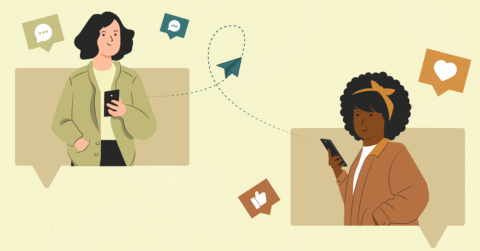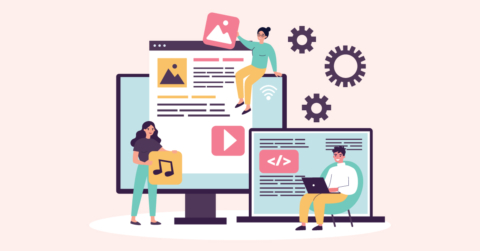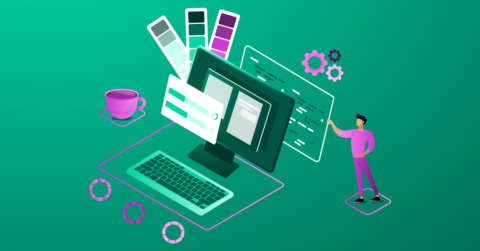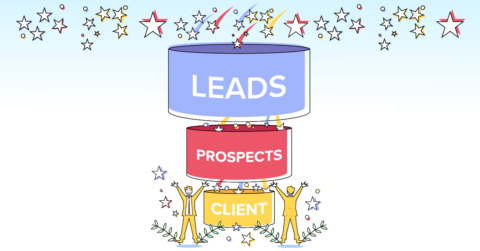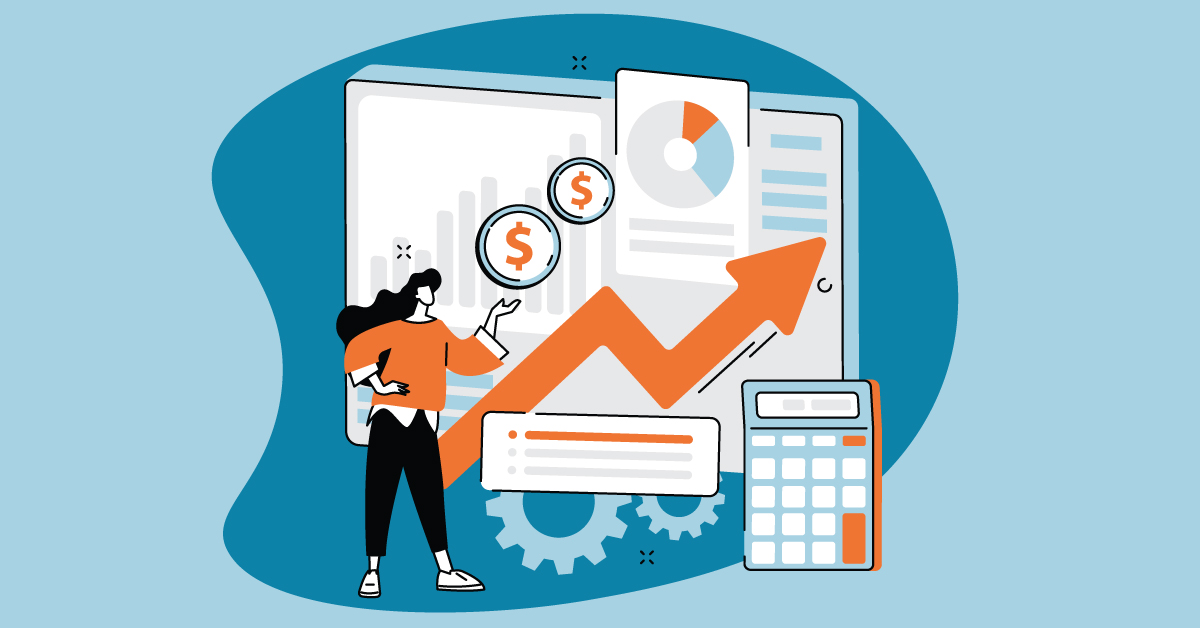
Lúgh Studio’s Ultimate Guide To Upselling
10/26/23
digital design
We have all experienced upselling as a customer. Buy something, get excited about your purchase…only to be given yet another offer right afterwards.
Many of us have gotten annoyed – but does this strategy actually work? The fact is, it does. Upselling, when done right, can be an essential strategy for a business’s growth. It can also (as we will talk about later on) lead to more donations for a nonprofit.
Assuming you do it morally and in a way that your audience appreciates, an upsell is far from a spammy sales technique. Rather, it’s a way to give your customer something they likely find valuable – something they might not ever find on their own.
In our latest ultimate guide, we cover the art (and science) of the upsell in depth. We’ll cover what it actually is, our tips for doing it effectively, and how exactly upselling differs between businesses and nonprofits. We’ll also finish with a list of recommended resources if you want to educate yourself further on the process of upselling.
Download your PDF version of this guide here.
What Is Upselling?

At its most basic, upselling is a strategy designed to get your customers to spend more money. It’s a flow that takes somebody that has already committed to spending money, and offers them another product or service for an additional cost. The goal for a business is to increase the total average value of each individual customer. For a nonprofit, the upsell is aimed at increased donations.
Of course, effective upselling usually has a lot more going on in the background. This is just a simple summary of what exactly it entails. In the next section, we dive deeper into why upselling is so important for a company by discussing the strategy’s various benefits.
Why Is Upselling Important?
Regardless of the kind of organization you work at, upselling is an important strategy to consider. This is true for both private businesses and nonprofits.
We will approach this guide from the viewpoint of a for-profit business. That said, we do have a section titled “Upselling In Private Businesses Vs. Nonprofits” at the end of the guide. Be sure to give it a look for a more well-rounded view of upselling. For now, let’s cover some of the benefits upselling has for a business.
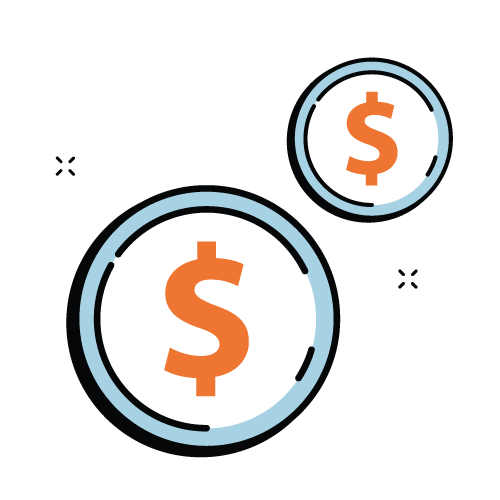
Increases Revenue
We’ll start out with the most obvious advantage. When people think of upselling, the natural starting point is “more money.” And that makes sense. In fact, for some businesses, up to 30% of their revenue comes from upselling.
If you work at a business and are trying to increase your bottom line, you can’t afford not to be upselling! The fact is, you are leaving money on the table if you don’t.
Elevates Customer Experience
Upselling is only pushy (and a waste of your prospect’s time) if you are trying to sell them a low-quality product. If you are selling them something they would actually be interested in? Well, that’s where you start improving their overall customer experience.
If somebody is already in the process of buying something from you (as they are during an upsell), there’s a decent chance they want to buy more. Offer them something they would find useful or complementary to what they are purchasing, and they will thank you for it.
Enhances Data Insights
For every product or service that somebody buys from your organization, you get valuable insight. What are the sort of things that they desire, when do they purchase them, and what is their overall satisfaction with it once they have? Everything somebody buys from you is another chance to get this insight.
The result? You have more data to work with, resulting in better offers for your audience and an improved user experience. More upselling also allows you to refine your customer profiles, an essential part of the selling process.
Strengthens Brand Image
Assuming you have solid products to offer, upselling can be essential in building up your brand image. That’s because you are giving your customer more chances to see what you have to offer. After all, your products are intricately linked to your reputation as a business.
Plus, a solid buying process that seamlessly introduces an upsell looks professional. Your customers, even if they don’t buy, are usually left with a positive impression. That said, be sure you upsell is an offer your audience would actually want.
Nurtures Customer Relationships
Lastly (and more importantly over the long term), upselling can be fundamental in building relationships. Do you have something your audience would find valuable? Something that naturally goes along with what they have already decided to purchase? If you do, and you offer it as an upsell, this can go a long way in establishing a positive relationship.
Additionally, it gives you yet another touchpoint to communicate with them. Take advantage of this by assuring them any potential additional purchase is going to add value to their life, and you’ve increased the trust they have in you.

7 Tips For Effective Upselling
Let’s now go over some of our main tips for upselling. Again, this is written from the perspective of a business, but many of the tips are equally applicable to nonprofits looking for more donations.
As always, any individual tip here has the power to change your results. Implement more than one (or even several), and you are potentially looking at a transformed bottom line.
1) Lead With Value
Out of all of our tips, giving your customers something they actually want is potentially the most important thing to keep in mind. What does this mean? You likely already have insight into what your most popular products are, so start there. The offered upsell should enhance the customer’s experience, or at the very least align with their values and interests. This is rule number 1, and should always be followed.
2) Complement Whatever They Are Already Buying
An effective upsell is relatively seamless. Ideally, right after they have decided to buy something, you give them an option to buy an additional product that goes well with what they’ve already purchased.
This mimics one of the most effective upsell examples in commerce: the snacks at a grocery store checkout. Who hasn’t decided to add a chocolate bar at the last minute of a purchase? As for what “complements” the product as an ideal upsell? Be sure to check out examples for inspiration.
3) Aim For Optimal Timing
You don’t want to get the timing wrong when you are coming with an upsell. Too soon (before they’ve even decided on their initial purchase) and you risk driving them away. Too late (an automated email that comes hours after a sale has already come though) and you’ve failed to take advantage of the natural “motivation” a new customer has. Be sure to get the timing right here. Ideally, people should be offered a chance for an upsell right after they’ve confirmed a first purchase.
As for how you actually do that? Read our next tip to find out…
4) Implement The Right Technology
While upselling can happen in any sales situation (an in-person car sale, for example) most of them will happen online. That’s why it’s essential to use the right software. This is especially important if you are trying to craft the perfect upsell: right product, at the right time, to the right customer.
Still, it can be difficult to know where to get started. That’s why tools (particularly software) are so important. While there are many such softwares you might consider, give ClickFunnels a look. This is one of the most popular tools businesses use for offering upsells to their customers.
5) Use Segmented Audiences
Of course, none of these tips matters much if you are treating everybody the exact same. The fact is, your audience is full of customers with diverse needs and desires. Treat them with a “one size fits all” approach and you are setting yourself up for failure. You need to recognize that not all customers are the same.
This is where segmentation comes in. Try your best to tailor your upselling techniques to different segments of your audience. Offer different products to different people based on their unique needs and behaviors. Difficult to do? Of course – but much easier if you use the right tools!
6) Implement A/B Testing
Just like anything else, your process of upselling can only be improved with extensive A/B testing. Think you have the right product? Think your upsell landing page is optimized? Certain that there’s nothing left you can improve?
Think again. The fact is, the only way to know for certain that you’ve landed on an upsell flow that works is to continuously test it. Try out a different structure, different copy, and even different price points. You’ll be happy that you did when the sales start rolling in!
7) Don’t Forget A Post-Purchase Follow-Up
Lastly, be sure to follow up with anybody that opts for your upsell. How are they liking the product? Do they have any questions about the product or service? Is there anything you can do to make their experience better?
These are all questions you can ask. Not only can the answers give you valuable insight into how you might improve your upsell structure in the future, but they also ensure a positive customer experience. Taking the follow up seriously is how you show your customers you actually care about them, and sets the foundation of a profitable relationship for years to come.
Upselling For Private Businesses Vs. Nonprofits
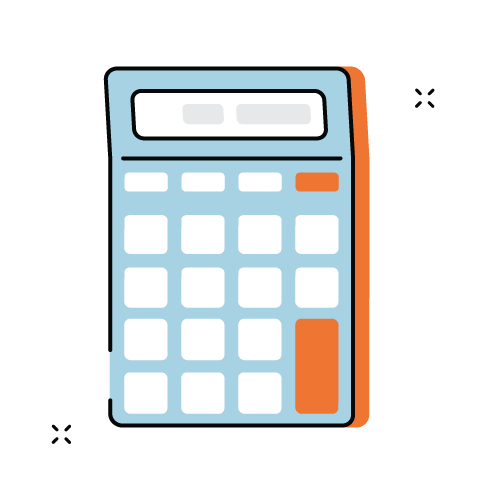
So, how does upselling differ between private businesses and nonprofits? While the fundamental concept of upselling remains consistent across sectors, there are certainly differences.
Here’s what it comes down to:
- Private business: Upselling is all about adding value to your customer’s life. What is the product or service that is going to make this their best purchase ever? That’s how you have to think about approaching the upsell if you work for a business.
- Nonprofits: For a nonprofit, “upselling” is all about getting a larger donation from your donor. What do you have to say (or offer) to them to convince them that a larger donation is the best way to go? This is a trickier question to answer than it is for a company selling a product – but it is possible.
Keep these main differences in mind when setting up an “upsell” for your nonprofit. Lastly, let’s cover some of the best resources you can consult for further information regarding upselling.
Recommended Resources
If you are serious about upselling, and driving more sales or donations at your organization, further education is essential.
With that in mind, here are some resources we’ve gathered to keep you informed. Consider consulting these when you are looking for more information on the topic.
Cross- and Upselling Course by Dale Carnegie
This online course goes over everything you need to know not only about upselling, but cross-selling as well. It is three hours of solid information, and also comes from a well-known organization.
Upsells Unleashed by Veena Prashanth
A useful primer on the fundamental principles of the upsell. Full of tips and actionable advice, treat this book as your manual as you go through your sales funnel.
“To Sell is Human” by Daniel H. Pink
Everybody works in sales – even if they don’t know it. Selling is a fundamental part of being human, and we are all constantly doing it to get what we want. This is a fundamental truth to understand when creating your upsell, which makes this book a valuable resource before getting started.
Influence: The Psychology of Persuasion by Robert B. Cialdini
No upsell will succeed before you first understand the psychology of who you are selling to. This is where persuasion comes in. If you want to craft an upsell that converts, this book is a deep dive into the psychology you first need to understand.
Conclusion
Done right, upselling is an essential practice. Not only can it help a business make more money, but it can also be quite effective in driving more donations for a nonprofit. This is important to keep in mind. No matter where you work, the art of the upsell is worth learning.
In addition, upselling can have a number of side benefits for your organization. These range all the way from better customer relations and increased communication, to more detailed data on the kinds of offers your audience responds well to. Upselling is not just about generating more revenue, but developing a more nuanced view of the people you are serving. This can have positive effects for years to come.
We hope you enjoyed our latest Ultimate Guide. If you ever have any questions, just let us know – and happy upselling!



